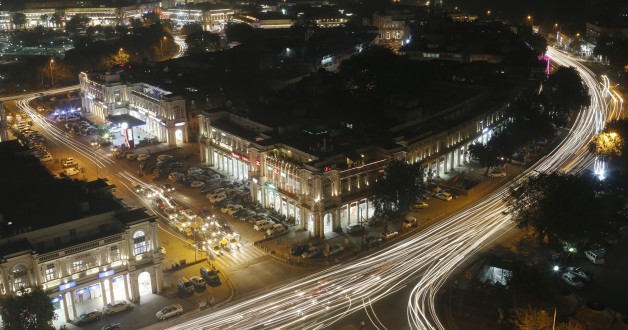The reform of urban mobility remains one of the biggest challenges confronting policy makers around the world. According to the United Nations, it is estimated that 1.3 million people are killed on the world’s roads each year. If left unchecked, this number could reach 1.9 million fatalities worldwide by 2020. The human cost attached to these road crashes is profound – unimaginable suffering and grief. Furthermore, the economic cost is a staggering $100 billion a year in developing countries alone. It is also estimated that the social, economic and environmental costs of congestion account for more than 1 percent of the GDP across the European Union, and cost the U.S. more than $115 billion each year. Road traffic also continues to account for around 80 percent of transport CO2 emissions and is expected to reach 9,000 Megaton per year by 2030 if the current mobility trends are not curbed.
New approaches are needed – intelligent mobility for smart cities
During the last 20 years, we have seen a shift in the thinking on how to provide the transport infrastructure required to support our mobility needs. For example, instead of building additional road capacity, there is more reliance nowadays on using technologies to optimise the performance of existing infrastructure, ‘sweating the assets’, and focusing on positive operational outcomes and customer experience. Support for these technologies across all modes of transport (including active and public transport) is expected to increase in future years given the limited budgets available to governments and asset owners, and the increased awareness of the role of smart technologies in optimising asset performance.
What is the business value of the intelligent mobility approach?
A best practice case study from the Florida Department of Transportation (FDOT) sheds some light on the benefits. Each year, the FDOT issues annual reports providing snapshots of the Department’s programs on Intelligent Transport Systems (ITS) in each of its districts.
From our partners:
The FDOT District Six 2013 Report shows the key financial benefit to South Florida customers is reduction in incident duration and traffic delays resulting in time savings estimated at $1.72 billion in FY13. Comparison of the estimated benefits to annual operating expenses and capital investments showed the ITS Program yielded around $36 in economic benefits for every dollar spent (Benefit-Cost Ratio of 36:1)
Similarly, the FDOT District Four ITS Program has been shown to produce high Benefit-Cost Ratios (BCR) in excess of 7:1 as shown in the diagram below. The latest BCR reported for 2014 was around 10:1 and demonstrates how the program has maintained a consistent Net Present Value (a measure of long-term profitability of investment in ITS) of $2 billion for the eighth consecutive year.
How do these benefits compare with value derived from traditional investment in physical expansion of roads?
Comparison of returns for different road investments shows an average BCR of 2.7 for ‘traditional’ road capacity projects, compared to average BCRs as high as 62 for some ITS investments
In a report from the McKinsey Global Institute, Intelligent Transport Systems were shown to offer a superior option to the addition of physical road capacity. A case study cited in the report further demonstrates the benefits: the cost of the transport technology solution on the UK’s M42 motorway was $150 million and took two years to implement; widening the road to produce the same outcome would have taken 10 years and cost $800 million.
Going forward
The benefits of investing in smart mobility systems are compelling, particularly given the improvements that could be made in terms of providing innovative solutions to lift our economic efficiency and productivity.
Whilst decision makers and leaders who run the world’s cities are increasingly recognising the role of smart technologies in ‘sweating of assets’, deployment at a global scale is still sporadic and not widespread. To spur change programs and capture potential savings, we must move beyond a project-by-project view and upgrade systems for planning, operating, and delivering smart infrastructure. This sort of investment will give our cities an opportunity to modernise their infrastructure and help drive economic growth and create jobs for the 21st century.
This feature is adapted from World Economic Forum.



















